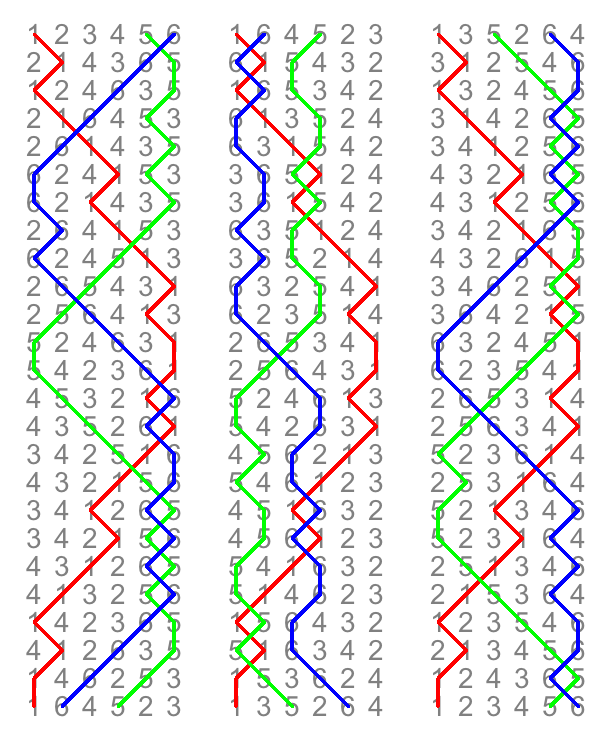Yesterday I noticed a little curiosity about symmetry for handbell pairs.
When ringing a method with a 2nd place lead end, we know that half way through the plain course our bells cross with each other and the second half of the course is the reverse of the first half. The symmetrical lead is half way through the course: the 3rd lead for minor, the 4th lead for major, and so on.
In a method with plain hunting at the lead end, the symmetrical lead is somewhere else in the course, never half way through, and its position depends on the place bell order of the method. For example, in Bristol Major the first lead of the course is the symmetrical lead, and in Glasgow it's the last lead.

What I noticed is that if we ring a course with a bob at home, every pair rings a symmetrical block of work: after the halfway point its work is reversed. For a 2nd place method we already knew that, so it's really an observation about methods with plain hunting at the lead end. It's easier to see if we imagine ringing a 2nd place lead end at the point where it produces rounds by causing the tenor to dodge back into its home position. In this case every pair of bells crosses with itself at the final lead end, so each bell in a pair is ringing the reverse of the work of the other bell in the pair.
The length of a course with a home at the end depends on the place bell order, for a method with a plain hunt lead end. For Bristol it's one lead, for Glasgow it's six leads. For major, it can be any length from one to six leads. The halfway point can be either a lead end (for example in Glasgow it's the lead end 17856342) or a half lead (for example in Bristol it's the first half lead, 24365871).
The diagram shows how it works for Norfolk Surprise Minor. There are three leads, with a 2nd place lead end at the end of the third lead (which therefore becomes a lead of Ipswich). The effect would be the same with a bob or a single at the end of the third lead - the important thing is that the handstroke is 124365, with 3-4 and 5-6 each swapped with respect to rounds.